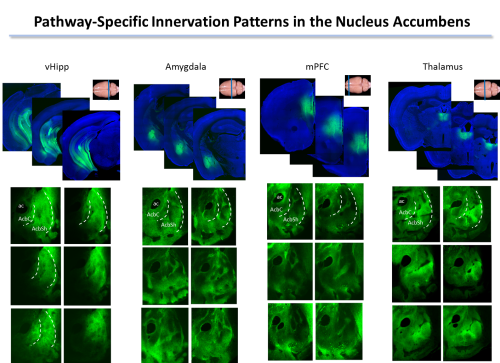
Britt Lab for Neural Circuits, Motivation, and Reinforcement Learning
The nucleus accumbens is a well-studied area of the forebrain that influences the eagerness with which animals seek out rewards as well as the pleasure they derive from consuming them. It regulates motivational processes and reinforcement learning. Abberant signalling in the nucleus accumbens has been linked to a variety of psychiatric conditions, including addiction, OCD, and schizophrenia. In general this structure is thought to integrate contextual, emotional, and motivational cues to initiate and coordinate reward seeking behaviour.
 The Britt lab is currently trying to understand what kind of information is encoded in the different inputs to the nucleus accumbens as well as how this information ultimately gets integrated into an action plan. We hope to establish exactly when each input to this integrative structure is both active and consequential to behaviour. To address these questions the Britt lab studies rodents and uses calcium imaging techniques, such as fiber photometry, in combination with optogenetic manipulations. Our goal is to understand the causal relationship between neural circuit activity and behaviour with millisecond and pathway-specific precision.
The Britt lab is currently trying to understand what kind of information is encoded in the different inputs to the nucleus accumbens as well as how this information ultimately gets integrated into an action plan. We hope to establish exactly when each input to this integrative structure is both active and consequential to behaviour. To address these questions the Britt lab studies rodents and uses calcium imaging techniques, such as fiber photometry, in combination with optogenetic manipulations. Our goal is to understand the causal relationship between neural circuit activity and behaviour with millisecond and pathway-specific precision.
The Britt lab is also trying to understand how pathway-specific neural circuit activity is altered in rodent models of psychopathology as well as how it changes in response to popular medications. Insights gained from this kind of neural circuit-mapping approach have already been used in the development of highly specific therapeutic interventions designed to improve the lives of patients afflicted by mental illness.